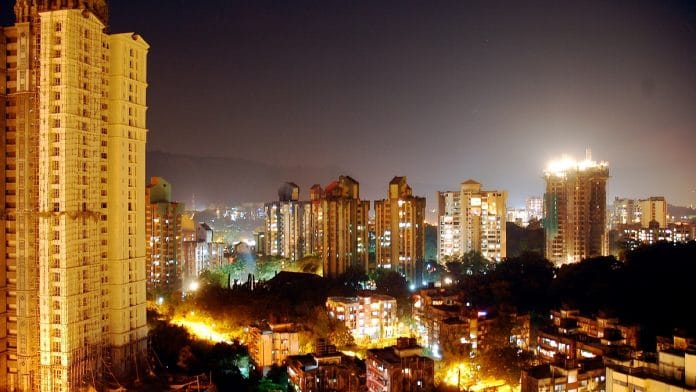Thank you dear subscribers, we are overwhelmed with your response.
Your Turn is a unique section from ThePrint featuring points of view from its subscribers. If you are a subscriber, have a point of view, please send it to us. If not, do subscribe here: https://theprint.in/subscribe/
If you are planning on buying a 3BHK or 4BHK apartment, I would advise you to avoid those complexes which have mixed size apartments. Let me explain.
Apartment complexes are no longer a collection of houses on a plot which have a common water distribution, a generator and staff for cleaning the shared areas. The new common facilities are club house, swimming pool, lifts, kids play area, meeting hall, multiple purpose play courts, indoor game areas, security teams etc., just to name a few. While these facilities can be/are used equally by all apartments, the cost of maintaining these are often divided based on the size of individual flats. The relevant government laws (wherever they exist) for complexes were created in 1960s and 70s and did not envisage such sweeping growth in facilities and generally mention that all expenses will be shared in direct proportion the area occupied by individual flats. Often governments did not even bother to create rules to implement these laws. Some big flat owners have tried to take these up with courts, which while sympathetic, put up their hands saying the legislative framework do not enable them to offer relief to such litigants.
This unfavourable treatment of the large flat owners starts from the time the purchase. The built- up area (also called carpet area) of your flat is increased by 30+ percentage points to arrive at what is called SBU (Super Built-Up Area). Here again the larger the flat the higher would be added value. This addition is meant to distribute the cost of common use areas among buyers. Here again the assumption is that bigger flats use more of the common area. If the state government has a law for selling only by carpet area, your final agreement will show that a certain carpet area was sold to you for the total amount paid by you. Square foot rate will not be mentioned anywhere. Apart from these there are ingenious terms like floor rise and preferred location etc which are charged on SBU basis.
Let us suppose you have bought the flat, blissfully ignorant of the way the price has been arrived at. Now you must deal with the RWA (Resident Welfare association). They will lump all expenses together and charge you in proportion to your SBU area. Don’t forget that you have already been burdened with excessive common area.
Next in line is the state government which levies property tax on you based on your SBU. They will also charge you a higher amount if you let out your flat. You continue to pay higher amount for unjust common area.
Now the Central government comes into the picture. In a complex which has different sized apartments (say ranging between 1000 to 2500 Sq ft of SBU). This creates an anomalous situation. At the time of implementation of GST, all apartments may have been within the Rs 7500 limit set by central government as exemption from GST payment. Now with inflation, maintenance charges need to be increased, but the heavily skewed maintenance charges will ensure that only the larger apartments must pay GST on their entire maintenance amount (Yes you got it! GST rules do not give the exemption of Rs 7500 to all apartment owners but only to those being charged less than Rs 7500. What is the rationale for this discrimination? It is same old story: If you have bought the bigger apartment in the complex, you must be rich and so you must pay more.
Does this mean that you will get complete justice if you buy an apartment in complex with equal size apartments. Not really but you can be sure that injustice has been dealt out equally to all apartment owners. Cheers!
These pieces are being published as they have been received – they have not been edited/fact-checked by ThePrint.


